Korean Food: Basic Overview
Common Ingredients
Common Cooking Methods
Courses
Meals
Key Taste
Eating Etiquette
Meal Presentation
Culinary Festivals
Influence and Fusion
Popular Types of Korean Food
-
Noodle Soups
Korean noodle soups combine long noodles with flavorful broths.
These soups can include a variety of ingredients like vegetables, meat, and seafood.
-
Dried Noodle Dishes
Korean dried noodle dishes can be categorized into cold and hot varieties.
They can be stir-fried or served without broth or only sauce.
-
Fermented Dishes
These dishes range from sour to spicy in flavor. Kimchi is a staple in Korean meals.
They are ideal for vegan and vegetarian diets.
-
Grilled and Barbecued Dishes
Korean barbecue is famous worldwide, featuring marinated meats like beef, pork, and chicken grilled right at the table.
They are often accompanied by a variety of side dishes and sauces.
-
Rice Dishes
Rice is a staple in Korean cuisine, forming the base of dishes.
Rice is also used in making rolls and as a side for many dishes, like soups, stews, or grilled treats.
-
Rolls
Korean rolls, such as gimbap, are made with seaweed and rice, and filled with vegetables, eggs, and meats.
They are a popular snack or meal.
-
Soups
Soups in Korea typically include ingredients like meats, seafood, vegetables, and tofu.
They provide warmth and comfort.
-
Stews
Korean stews are thicker and more robust than soups, though their ingredients are similar.
-
Desserts
Korean desserts vary in style and ingredients.
Some are street food items.
They come with an array of side dishes, known as “banchan” (반찬), that accompany steam-cooked short-grain rice. Fermented vegetable dishes (like kimchi) are also a major component of many Korean delights.
While the dishes from North Korea and South Korea share the same roots, various historical and economical factors have contributed to the widening gulf between the two cuisines.
Keep on reading to discover 33 delicious South Korean dishes and their highlighted characteristics. Other insights about traditional Korean food, its worldwide recognition, and its healthiness are worth discovering.
33 Popular South Korean Dishes with Filters
South Korean cuisine is surprising with many tasty dishes. With 33 dishes below, I hope you will enjoy your food journey in this country. Plus, you can use the filter to search your loved recipes quickly.
But first, let’s explore the main characteristics of these South Korean dishes across six distinct categories: most popular, traditional, national, street food, exotic, and fusion delicacies.
These dishes may feature uncommon ingredients or preparation methods. For instance, raw crab soaked in soy sauce, or dishes made from intestines.
Kimchi
- National
- Traditional
Kimchi is the most popular and traditional Korean dish, featuring fermented vegetables. It’s tangy, mildly spicy delight that complements rice, soups, and stews.
As a common food in Korea, kimchi is a side dish that predominantly comes in napa cabbage and Korean radish, seasoned with pepper, garlic, ginger, and scallion.
While baechu-kimchi (napa cabbage kimchi) is prevalent, there are other variants like baek-kimchi (white kimchi), dongchimi (radish water kimchi), kkakdugi (cubed radish kimchi), nabak-kimchi (water kimchi), etc.
Originating in Korea 3000 years ago as a method to store and salt food for the cold winter months, kimchi’s popularity surged during the Silla dynasty.
Bulgogi
- National
- Traditional
Bulgogi, originally known as “maekjeok, ”is the traditional BBQ dish of Korea that first appeared in the Goguryeo era.
Usually, the pieces of beef, carefully seasoned with spices like ginger and garlic, are grilled over a griddle or stir-fried in a pan, resulting in a tender beef texture and a salty and slightly sweet flavor.
To enjoy bulgogi, simply dip a piece of beef with ssamjang sauce, wrap it inside lettuce, and put it in your mouth to feel the fullness of this dish.
Bibimbap
- National
- Traditional
Bibimbap is a traditional rice dish in Korea, with bibim meaning “mixing,” while bap refers to cooked rice.
Instead of eating rice with individual foods, bibimbap includes several ingredients, like carrots, mushrooms, beef, and eggs (fried or raw), and gochujang (Korean red chili paste).
Bibimbap can be served in a regular bowl or in a hot stone pot (dolsot), where the rice at the bottom gets crispy and adds another layer of texture.
In Korea, the Jeonju, Tongyeong, and Jinju are especially popular with their bibimbap versions.
Kimchi Bokkeumbap
- Traditional
Kimchi bokkeumbap is a Korean specialty featuring fried rice, vegetables, meat, and traditional kimchi. Once stir-fried, the rice will have a beautiful golden color and a typical kimchi flavor.
In Korea, students see kimchi bokkeumbap as an affordable meal and easy to make at home. Kimchi fried rice is also a popular option for lunch.
Most often, kimchi bokkeumbap is often served with a warm soup such as kongnamul-guk (soybean sprout soup), or miyeok-guk (wakame soup), danmuji, and cool dongchimi (usually in the summer).
Gimbap
- National
- Street Food
- Traditional
Gimbap (aka kimbap) is a traditional Korean delicacy consisting of two components, gim and bap, seasoned rice spread over toasted seaweed, then topped with various fillings.
It contains cooked rice, vegetables, fish, and meat neatly wrapped in gim (dried seaweed) and sliced into bite-sized pieces.
Choices range from danmuji, beef, egg strips, and kimchi, to more eclectic ones like bulgogi or perilla leaves. Some versions even come egg-coated and fried or sprinkled with sesame seeds.
Jajangmyeon
- National
- Traditional
Jajangmyeon is a famous Korean noodle dish originating from a Chinese restaurant in Incheon in 1905.
It consists of thick, chewy noodles topped with a rich, dark brown sauce made from fermented black bean paste.
The sauce is typically cooked with meat (usually pork or beef), onions, potatoes, and occasionally other vegetables.
The dish is often served with pickled radishes or kimchi on the side.
Japchae
- National
Japchae is a savory stir-fried glass noodle specialty coming from the Joseon Dynasty in the 17th century. Since then, Japchae has become a traditional Korean delight and a fantastic side dish (banchan).
The glass noodles are stir-fried with vegetables, beef, and spices. Other variations swap beef for pork, chicken strips, or even seafood (usually crab).
Normally, people cook the ingredients of japchae separately before incorporating them into one delicacy.
Samgyeopsal
- Street Food
Samgyeopsal is a Korean specialty that boasts generous cuts of pork belly, comprising a fatty cap and two layers of meat below it.
Also known as “three-layered pork belly”, samgyeopsal was first prepared in the early 20th century at Kaesong.
Classified as gui, samgyeopsal is visually reminiscent of bacon. Additionally, the taste of the pork is enhanced when dipped into a sauce made with salt, sesame oil, and pepper.
Typically, samgyeopsal is grilled on an inclining metal griddle or gridiron right on the diners’ table. For a more authentic Korean dining experience, enjoy Samgyeopsal with shots of soju or somaek (a simple mixed drink consisting of soju and beer).
Tteokbokki
- Street Food
Tteokbokki is a well-known Korean food made with garae-tteok (a long, white, cylinder-shaped rice cake) and fish cakes, boiled eggs, and scallions.
The traditional rice cakes are usually chewy and sticky, bathed in the rich umami flavor and characteristic spicy sauce.
Tteokbokki is traditionally flavored with spicy gochujang or non-spicy ganjang sauce. The spicy gochujang sauce is the most common, while the non-spicy version, called gungjung-tteokbokki, is less popular.
In Korea, tteokbokki is available at dedicated restaurants, commonly known as jeukseok tteokbokki. Additionally, it is a popular home-cooked meal as garae-tteok (rice cakes) are readily available in pre-packaged form.
Kimchi Jjigae
- Street Food
Kimchi-jjigae is a stew-like Korean specialty, traditionally crafted from kimchi and a medley of ingredients like meat, tofu, scallions, onions, and garlic.
Typically, this kimchi stew utilizes older, more fermented kimchi, known for its robust flavor and abundant probiotics.
People season the mix with fermented bean paste or red pepper paste before simmering in either water or anchovy stock.
Served sizzling in a stone pot, kimchi-jjigae is enjoyed communally with rice and accompanying side dishes. Its origins trace back to the Joseon era, with the introduction of chili peppers to Korea.
Korean Fish Cake
- Traditional
Korean fish cake is a classic Korean dish that traditionally comprises ground fish meat, flour, and seasonings skewed on bamboo sticks. It goes by 2 names: “oden” and “eomuk”.
Eomuk is the native Korean word for fish cake, while oden is thought to have originated from Japan and is a long, flat type of fish cake cooked with vegetables and eggs on skewers.
The chewy and tender fish cakes are often served with a spicy broth. To enjoy Korean fish cake, simply dip a fish cake stick into the broth or take a bite of the fish cake and take a sip of the broth.
Bingsu
- Fusion
Bingsu is a Korean dessert with shaved ice topped with sweet toppings like chopped fruit, condensed milk, fruit syrup, and red beans.
The most traditional bingsu is patbingsu, translating to “red beans shaved ice”, combining shaved ice with red bean paste, tteok (rice cakes), ground nut powder, and more.
Its origins trace back to the Joseon dynasty when officials relished crushed ice topped with fruits from the ancient seokbinggo, a Korean ice storage.
Naengmyeon
- Traditional
Naengmyeon is a traditional cold noodle dish from both South and North Korea alike.
Korean cold noodles offer long and thin-strand noodles made by hand. Naengmyeon is typically served in a large brass or stainless-steel bowl with various toppings.
In the past, people believed that cutting long noodles diminished their symbolic meaning of longevity and good health.
There are 2 common versions of naengmyeon, featuring mul naengmyeon and bibim naengmyeon. Mul naengmyeon originated in North Korea’s Pyongyang and is served in a broth made from dongchimi (radish water kimchi).
Sundubu-Jjigae
- Traditional
Sundubu-jjigae is a spicy stew with a perfect combination of soft tofu, vegetables, and meat or seafood. It is even considered one of the best traditional stews in Korean cuisine that dates back to the Joseon era.
Sundubu-jjigae, a Korean stew served hot in an earthenware pot, combines fresh soft tofu with pork, kimchi, seafood, and spices like gochujang or gochugaru, topped with a raw egg for richness.
Koreans usually enjoy sundubu-jjigae with a bowl of steaming white rice, kimchi, and several banchan on the side.
Galbijjim
- Traditional
Galbijjim is a steamed dish primarily crafted from short ribs, either beef or pork. Traditionally savored during Chuseok, Korea’s major harvest festival, galbijjim was categorized as a high-class delicacy.
The ribs require meticulous preparation in cutting, seasoning, and simmering with other ingredients, including soy sauce, garlic, ginger, jujube, ginkgo nuts, chestnuts, mushrooms, and pine nuts.
Once cooked, galbijjim is presented in a covered bowl, typically accompanied by rice and assorted side dishes.
Dakgalbi
- Traditional
Dakgalbi is a Korean stir-fried delight made by marinating diced chicken in a spicy sauce comprising chili paste and other seasonings. The mixture is then stir-fried with tteok (rice cake), cabbage, perilla leaves, and sweet potato.
Created in the 1960s as an affordable alternative to pricey grilled dishes, dakgalbi quickly became a favorite among budget-conscious soldiers and students for pairing with anju alcohol.
Another name for this stir-fried chicken delicacy is Chuncheon dakgalbi. As a local specialty of Chuncheon, there’s even an entire street of restaurants, and an annual festival is dedicated to dakgalbi.
Bossam
- Traditional
Bossam is a well-loved dish featuring tender, flavorful boiled pork, traditionally served with a variety of accompaniments.
The pork, usually pork belly, is boiled in a flavorful broth with ingredients like garlic, ginger, and onions, until it becomes very tender. Boiled meat is then cut into bite-sized pieces.
Most often, locals enjoy bossam by wrapping a piece of meat in lettuce, kimchi, or perilla leaves. People dip bossam in either ssamjang, a spicy and savory sauce made of chili paste and soybean paste (doenjang); or saeujeot, a piquant pink sauce made of tiny pickled shrimp.
Samgye-tang
- Traditional
Samgye-tang is a Korean soup, often known as ginseng chicken soup, that was popular among Koreans during the Joseon Dynasty (1392-1897).
The Korean custom of eating samgye-tang during hot weather dates back centuries and is still widely practiced today, especially during sambok days.
Typically, the broth is made from a whole young chicken stuffed with ginseng, garlic, jujube, and rice. It’s packed with nutrients and can help people stay cool and energized during hot summers.
Traditionally eaten by the elderly in the summer, samgye-tang broth was used to treat the queen’s illness during the reign of King Injo.
Tteokguk
- Traditional
Tteokguk is a Korean rice cake soup usually consisting of delicate rice cakes (tteok) and a tasty broth (guk).
The tender and chewy rice cakes will be cooked with beef broth to bring out an umami taste and combine with the refreshing flavor of seaweed.
Then, tteokguk is typically finished off with thinly sliced cooked eggs, marinated meat, crispy seaweed, and a splash of sesame oil.
Tteokguk was traditionally reserved for the first day of the Korean New Year as a sign of good luck and aging another year. Today, however, people enjoy tteokguk at any time of year.
Haemul Pajeon
- Traditional
Haemul pajeon is a type of Korean pancake made with a batter consisting of rice flour, wheat flour, eggs, scallions, and other ingredients depending on the regional variation.
Traditional fillings include beef, pork, kimchi, and seafood, with the appearance of pancakes said to resemble Chinese scallion pancakes, but their texture is not as thick.
Commonly, enjoying a warm haemul pajeon with a glass of cold makgeolli is a beloved tradition on rainy days in Korea.
Another variety is dongnae pajeon, made from eggs, glutinous rice flour, rice flour, and gochujang. It originated in Busan and was named after the Dongnaesung fortress.
Sundae
- Traditional
Sundae (soondae) is a time-honored Korean blood sausage combining pig blood, vegetables, and noodles to stuff inside the pig or beef’s intestines.
In South Korea, sundae is a dish that is typically steamed and accompanied by offal like liver and lung. It’s an inexpensive snack on the street.
To bring out the flavors, people dip sliced sundae pieces in a salt-black pepper mixture in Seoul. In Honam, sundae can be served with a vinegar-gochujang mixture, while Yeongnam prefers seasoned soybean paste and Jeju fancy soy sauce.
Kongguksu
- Traditional
Kongguksu is a soybean-based Korean soup consisting of cold wheat noodles bathed in soy milk broth, which has existed since the 19th century.
As a seasonal specialty, people often serve kongguksu in cold soymilk soup made from ground soybeans. Not only is it a perfect summer deal, but kongguksu is also vegan-friendly.
Tteok-Galbi
- Traditional
Tteok-galbi is a traditional grilled short rib patty delicacy, with the term appearing in Korea in the late 1960s and early 1970s.
Before that, Tteok-galbi was known as “no-galbi”, which means “elder ribs” because it was a familiar dish for old people with weak teeth.
The magic of galbi lies in its perfectly seasoned ribs that are grilled or braised to pair perfectly with rice.
Songjeong’s “tteok-galbi street” is known for its unique half beef and half pork version, while Gwangju boasts the delicious ori-tteok-galbi, made with duck meat.
Seolleongtang
- Traditional
Seolleongtang (also known as ox bone soup) is a traditional Korean soup made with the ox’s leg bones.
Created during the Mongol invasion of Korea, Seolleongtang is a staple during chilly Seoul winters.
Since seolleongtang is made with beef bone, meat, and brisket, the broth features a creamy and cloudy appearance. Koreans usually enjoy seolleongtang with scallions and strips of savory meat.
Miyeok-guk
- Traditional
Miyeok-guk is a seaweed soup deeply rooted in Korean culture and tradition with no spicy flavor.
This soup, known for its mild briny flavor, is connected to Samsin Halmoni, a goddess revered for aiding childbirth.
Furthermore, miyeok-guk is a well-liked birthday dish, especially for mothers, signifying respect and gratitude for their sacrifices.
While many people associate seaweed (sea mustard) with a strong oceanic taste, miyeok-guk comes with a slightly briny flavor and a touch of saltiness.
Gamjatang
- Traditional
Gamjatang is a type of stew made using pork bone, coming from Jeolla province with a long history dating back to the Three Kingdoms period.
Usually, gamjatang’s rich, deep red broth is infused with red peppers and perilla seeds for a bold flavor.
In addition, people boil the pork bones for a long time at high heat to soften the meat surrounding the vertebrae. Commonly, locals enjoy the meat with kimchi and a rice bowl.
Yukgaejang
- Traditional
Yukgaejang is a Korean thick, spicy beef soup packed with shredded beef, gosar (fernbrake fiddleheads), beansprouts, scallions, mushrooms, and other vegetables.
The spicy beef soup was once a traditional staple in royal court cuisine. In Korea’s summer months, people enjoy yukgaejang, which is believed to supply a refreshing energy boost and aid in combating the heat.
Although yukgaejang is typically made with beef, a special type of soup called Dakgyejang is made with chicken instead.
Haejang-guk
- Traditional
Haejang-guk is a Korean soup known as a remedy for hangovers. Meaning “soup to chase a hangover,” haejang-guk alternatively termed sulguk.
The hangover soup typically comprises dried napa cabbage, vegetables, and meat in a rich beef broth.
There are diverse haejang-guk versions, including kongnamul gukbap, ojingeo mulhoe guksu, ugeojiguk (made with napa cabbage), seonjiguk (made with coagulated ox blood), jaecheopguk (made with garlic chives and jaecheop clam), and gulgukbap (made with oyster).
Jeongol
- Traditional
Jeongol is a Korean-style hot pot that traditionally comes with meat, mushrooms, seafood, and various other ingredients simmered in a savory broth.
Jeongol is prepared in a special pot called jeongolteul. While it bears similarities to jjigae, jeongol stands out with its richer assortment of ingredients.
Surprisingly, jeongol was a dish for the upper class and royals. Historically, its roots trace back to soldiers who, during ancient wars, cooked food in their iron helmets.
Kal-guksu
- Traditional
Kal-guksu is a traditional noodle dish with handcrafted wheat flour noodles served in a generous bowl of broth and additional components. It gets its name from the cutting process used to create the noodles.
Handmade noodles of kal-guksu have a characteristic bouncy texture and flat shape. To make the broth, shellfish, kelp, and dried anchovies are commonly used, and sometimes chicken broth.
Then, the wheat flour noodles, Korean zucchini, potatoes, scallions, and other vegetables are added to the broth and cooked together.
Being around since the Joseon period, kal-guksu appeared in a cookbook by Lady Jang. During the barley and wheat harvest festival, Koreans will often eat this knife cut noodle soup.
Gejang
- Exotic
Gejang (gejeot) is a traditional Korean fermented seafood made from live crabs that are marinated in soy sauce or chili pepper-based sauce.
The name “gejang” is a portmanteau of “ge” (crab) and “jang” (condiment). Chamgejang is often referred to as “bapdoduk” (which means “a meal thief” or “a rice thief”) in Korea because it is believed to stimulate the appetite and make people want to eat more.
In addition, there’s also kkotgejang made using horse crab (kkotge), a popular specialty in Jeolla Province. There are many versions of this dish. However, Chamgejang is worth mentioning.
Bungeoppang
- Street Food
Bungeoppang is a fish-shaped pastry, a Korean street food item commonly enjoyed in winter. The traditional pastry is filled with sweetened red bean paste and grilled on a fish-shaped mold like a waffle iron.
The traditional filling for bungeoppang is sweetened red bean paste, but nowadays, many vendors in Korea offer a variety of fillings, such as pastry cream, pizza toppings, chocolate, and more.
Bungeoppang was originally inspired by the Japanese taiyaki and was introduced to Korea in the 1930s.
Gopchang
- Exotic
Gopchang refers to grilled or stir-fried beef or pork intestines in Korea. The intestines are meticulously cleaned, then seasoned or marinated before being cooked. They are popular for their chewy texture and ability.
When grilled, gopchang is often enjoyed with dipping sauces and side dishes, such as fresh lettuce leaves for wrapping, spicy ssamjang (a thick, spicy paste), and slices of garlic or chili peppers.
In stir-fried preparations, gopchang is typically cooked with vegetables like onions and green peppers, and seasoned with savory sauce.
What Makes Korean Dishes Unique?
Here are 4 standout features affecting Korean delights.
Korean History
Korean cuisine traces its origins to ancient agricultural and nomadic traditions, with the Three Kingdoms Period forming distinct regional culinary practices and foods emerging, further diversifying the nation’s gastronomic landscape.
Over the centuries, Korean food has been shaped by other influences, including Buddhist vegetarian principles, Confucian rituals, and foreign invasions.
Regional Cuisines
Each region boasts unique dishes influenced by its climate, geography, and local ingredients. For instance, Pyongan province is known for its bland flavors and dishes, while Hamgyong province, in the far north, heavily uses garlic and chili pepper in its dishes.
Holiday Specialties
Celebrations like Chuseok involve families gathering to prepare and share traditional foods like rice cakes.
Street Food Influence
Besides the delicacies for special times, the street flourishes with markets, alleyways, and vendors introducing various Korean specialties to locals and tourists.
Some of the prime street foods are tteokbokki, fish cake, and bungeoppang. Also, the influences of Japan also impact Korean street foods.
Next, let’s explore the typical beverages to go with delicacies in Korea.
What Beverages Are Great for Pairing with Korean Dishes?
Various Korean drink options, either traditional and modern ones, can pair excellently with dishes. Here are some great examples.
Soju
Soju is a clear alcoholic beverage that pairs well with many Korean dishes, particularly barbecue and spicy foods.
Makgeolli
Makgeolli is a slightly sweet, milky, and effervescent rice wine that complements spicy and savory flavors.
Cheongju
Cheongju rice wine pairs well with milder dishes like steamed fish or vegetable-based meals.
Green Tea
Green tea is a non-alcoholic option that can cleanse the palate, especially when eating greasy or heavy dishes, like meaty stews.
Beer
Light Korean or Asian-style lagers are refreshing and can balance the spice of Korean food. Beer and fried chicken (aka chimaek in Korea) is the most famous duo.
Have you found your favorite beverages yet? In case you don’t, check out the comprehensive list of beverages in South Korea for more options on drinks to pair with local fare.
Finally, if you have a chance, let’s enjoy all the delicious dishes on this list. I am sure you will be satisfied with their great taste.
There are still many other delicious foods that I have not mentioned in this list. If you know any other fantastic foods, feel free to share them in the comments. Also, do not forget to leave your questions; I will respond as soon as possible.


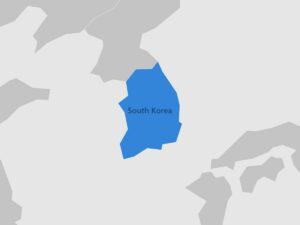
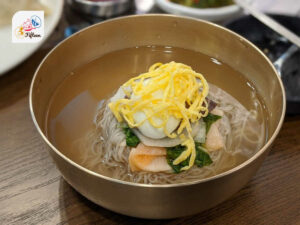
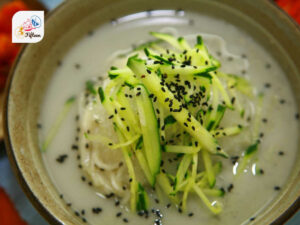
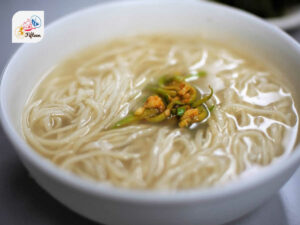
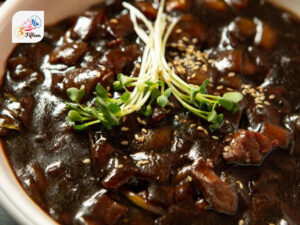
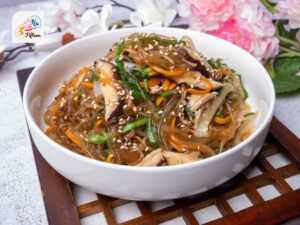
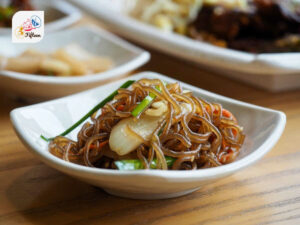
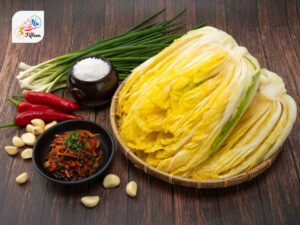
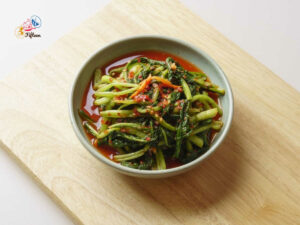
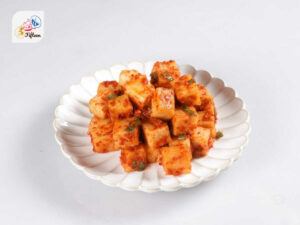
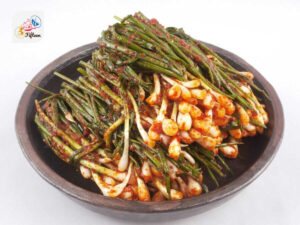
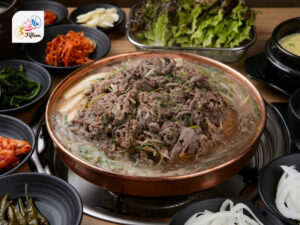
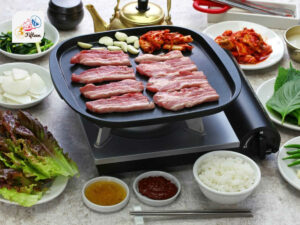
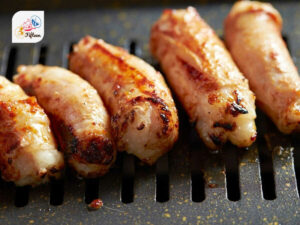
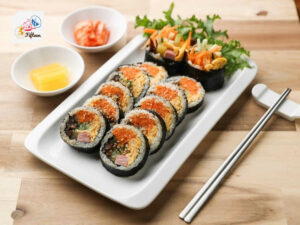
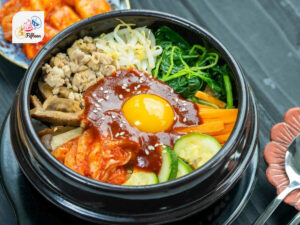
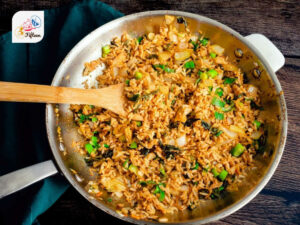
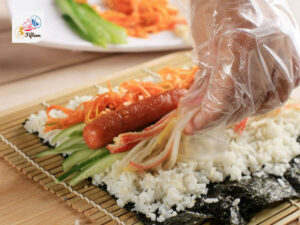
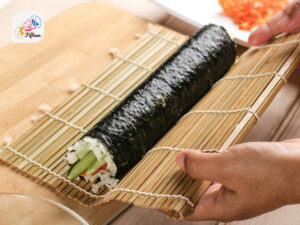
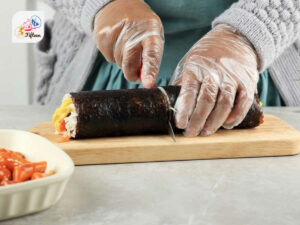
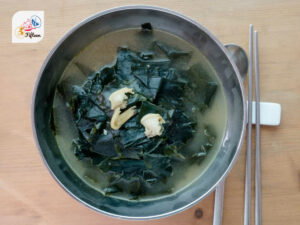
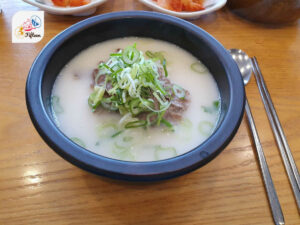
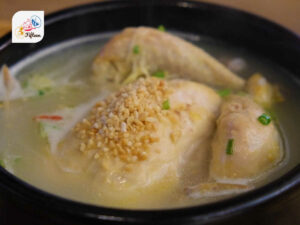
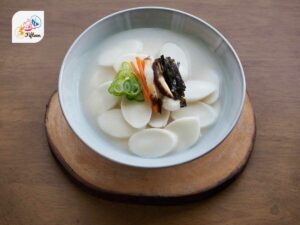
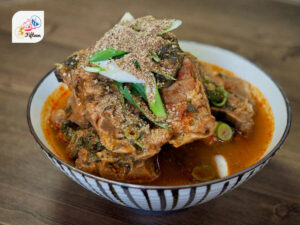
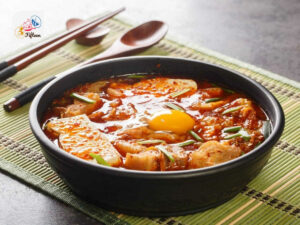
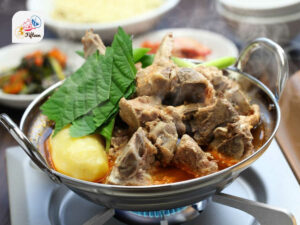
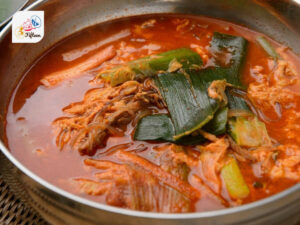
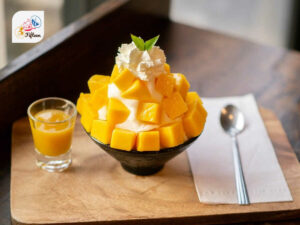
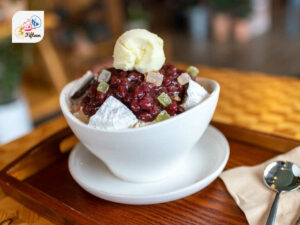
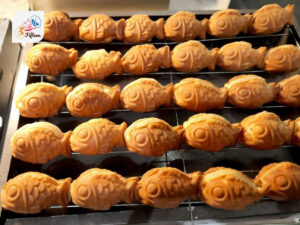
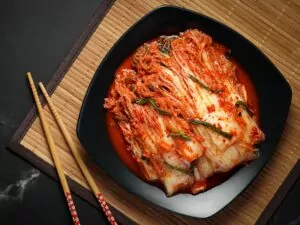
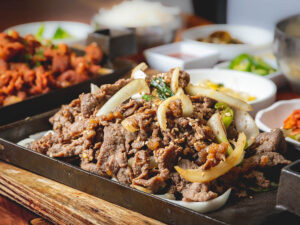
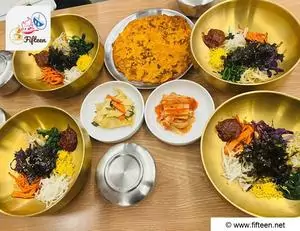
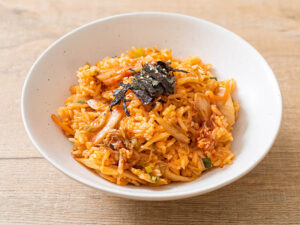
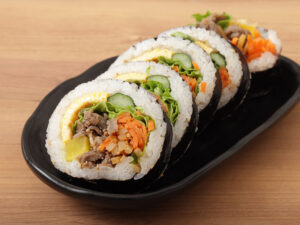
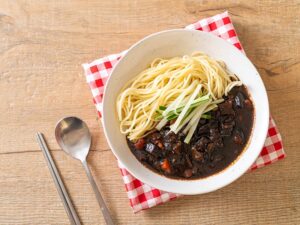
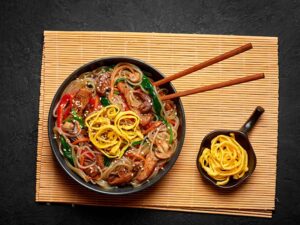
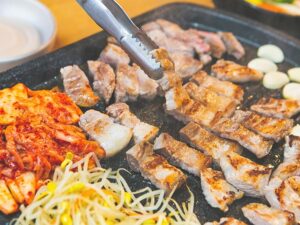
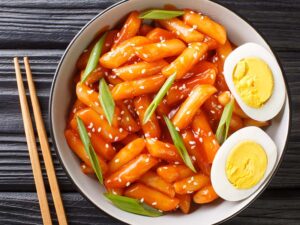
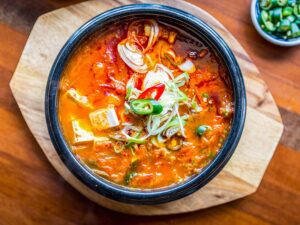
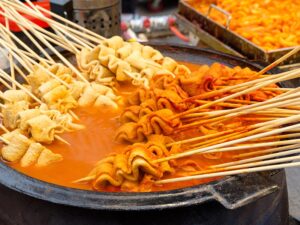
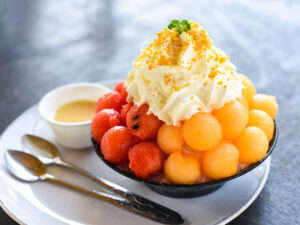
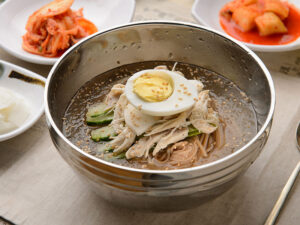
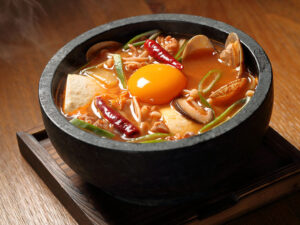
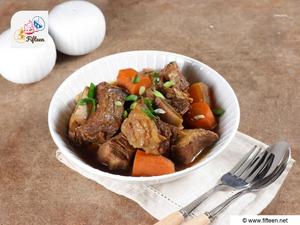
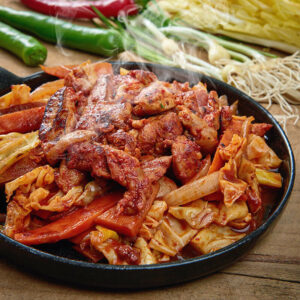
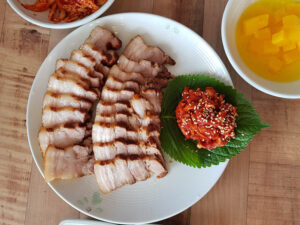
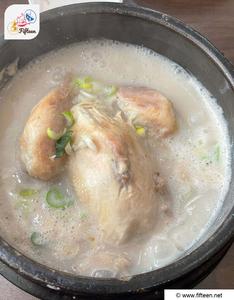
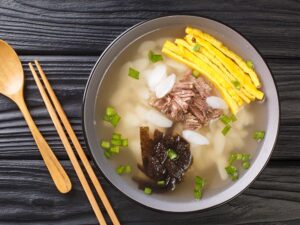
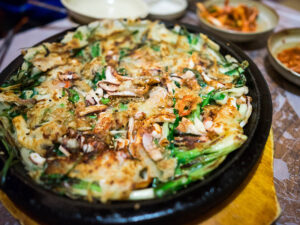
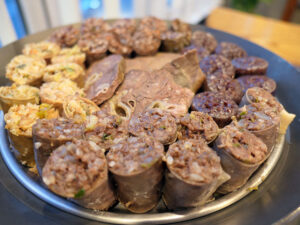
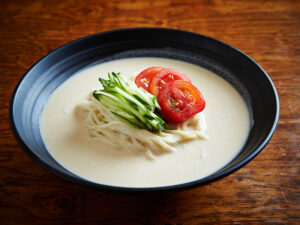
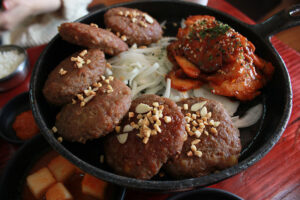
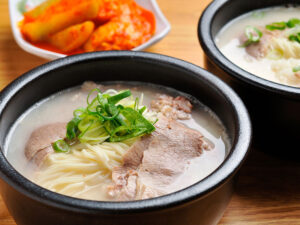
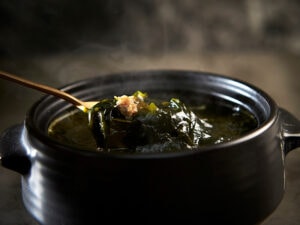
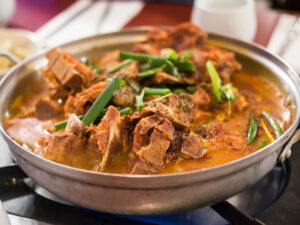
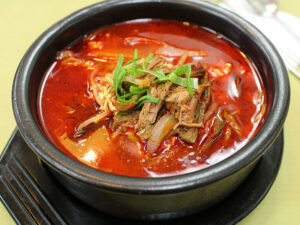
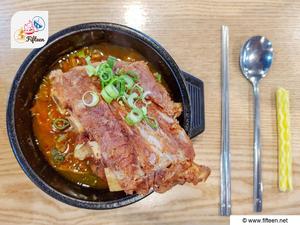
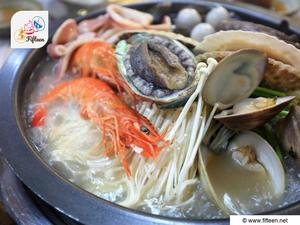
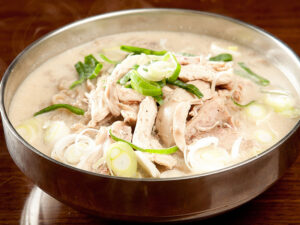
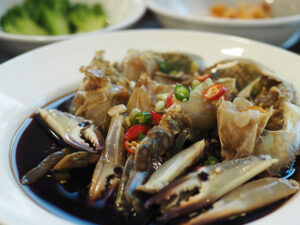
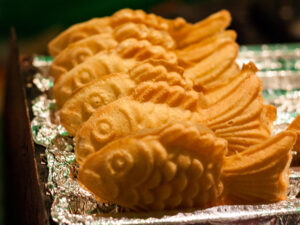
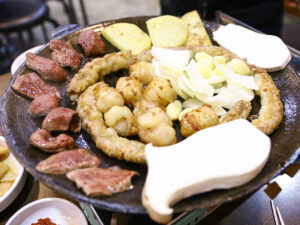
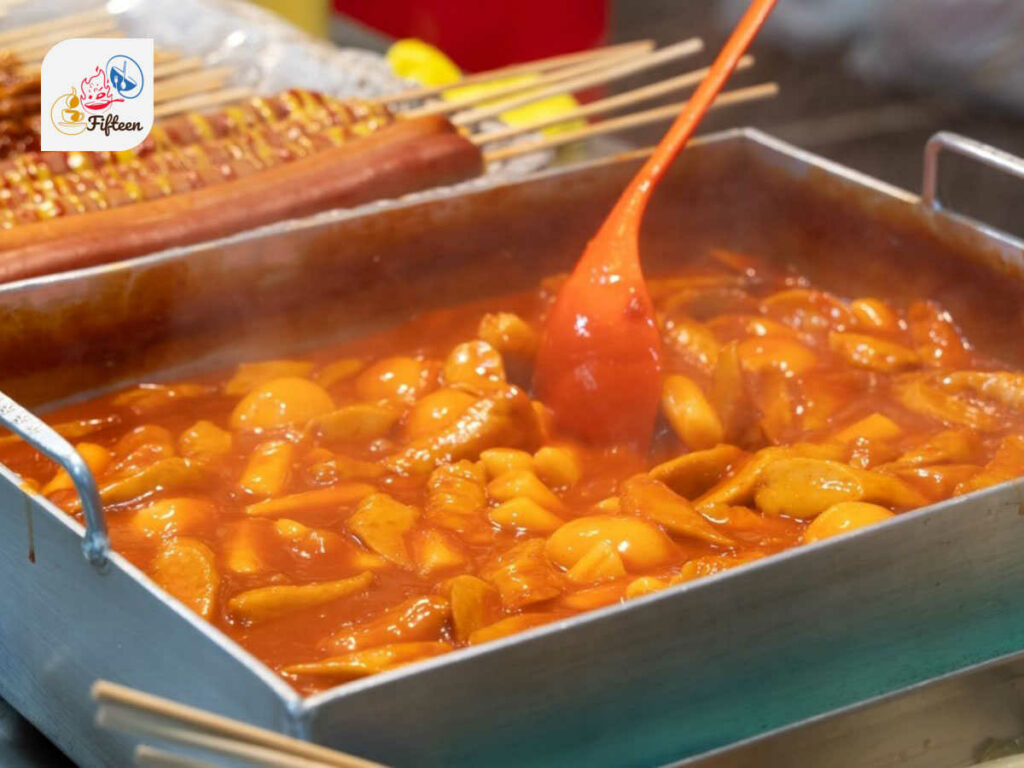
Truc Tran (Kris)
Senior Content Writer
Expertise
Home Cooking, Meal Planning, Recipe Development, Baking and Pastry, Food Editor, Cooking-video Maker, Asian Food Content Creator, Vietnamese Food Evaluation Expert
Education
TasTAFE, Australia
Kendall College (Australia Branch in Sydney)
HNAAu School (Vietnam, International Joint Training Program)
Kris, also known as Truc Tran, is a seasoned food writer and editor. She loves exploring all kinds of foods, from quick street foods to fancy restaurant dishes. In her writing, she brings together different tastes, cooking methods, and traditions of cuisines, showing how each culture’s food or drink is unique. On Fifteen.net, Kris shares her deep knowledge, especially about Asian food and traditional meals from across the globe.